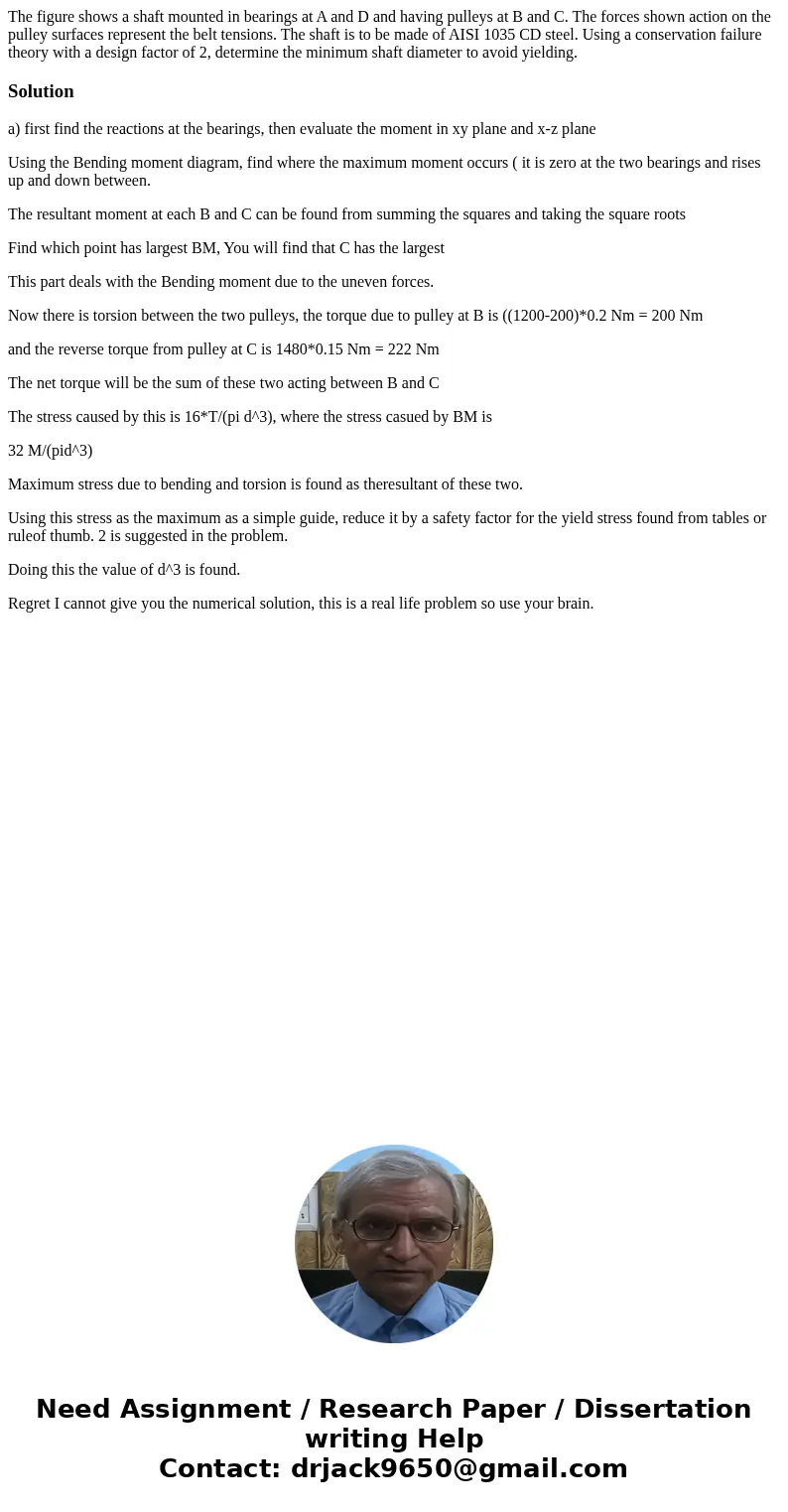The figure shows a shaft mounted in bearings at A and D and
Solution
a) first find the reactions at the bearings, then evaluate the moment in xy plane and x-z plane
Using the Bending moment diagram, find where the maximum moment occurs ( it is zero at the two bearings and rises up and down between.
The resultant moment at each B and C can be found from summing the squares and taking the square roots
Find which point has largest BM, You will find that C has the largest
This part deals with the Bending moment due to the uneven forces.
Now there is torsion between the two pulleys, the torque due to pulley at B is ((1200-200)*0.2 Nm = 200 Nm
and the reverse torque from pulley at C is 1480*0.15 Nm = 222 Nm
The net torque will be the sum of these two acting between B and C
The stress caused by this is 16*T/(pi d^3), where the stress casued by BM is
32 M/(pid^3)
Maximum stress due to bending and torsion is found as theresultant of these two.
Using this stress as the maximum as a simple guide, reduce it by a safety factor for the yield stress found from tables or ruleof thumb. 2 is suggested in the problem.
Doing this the value of d^3 is found.
Regret I cannot give you the numerical solution, this is a real life problem so use your brain.

 Homework Sourse
Homework Sourse